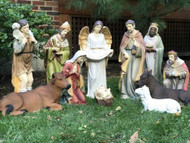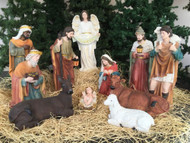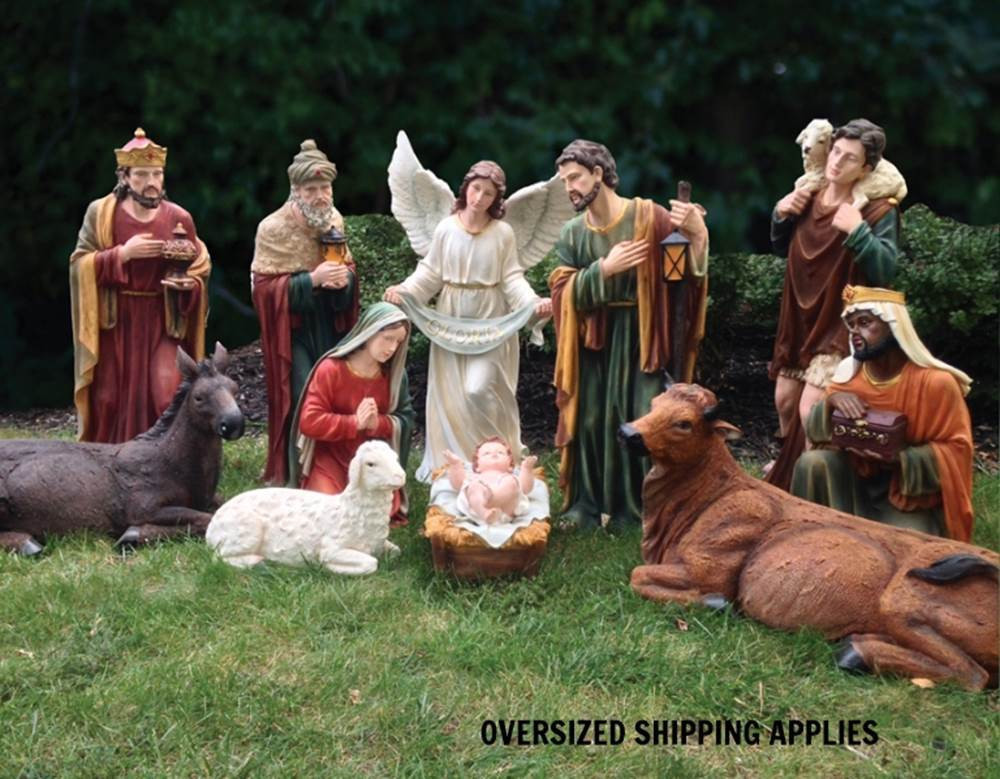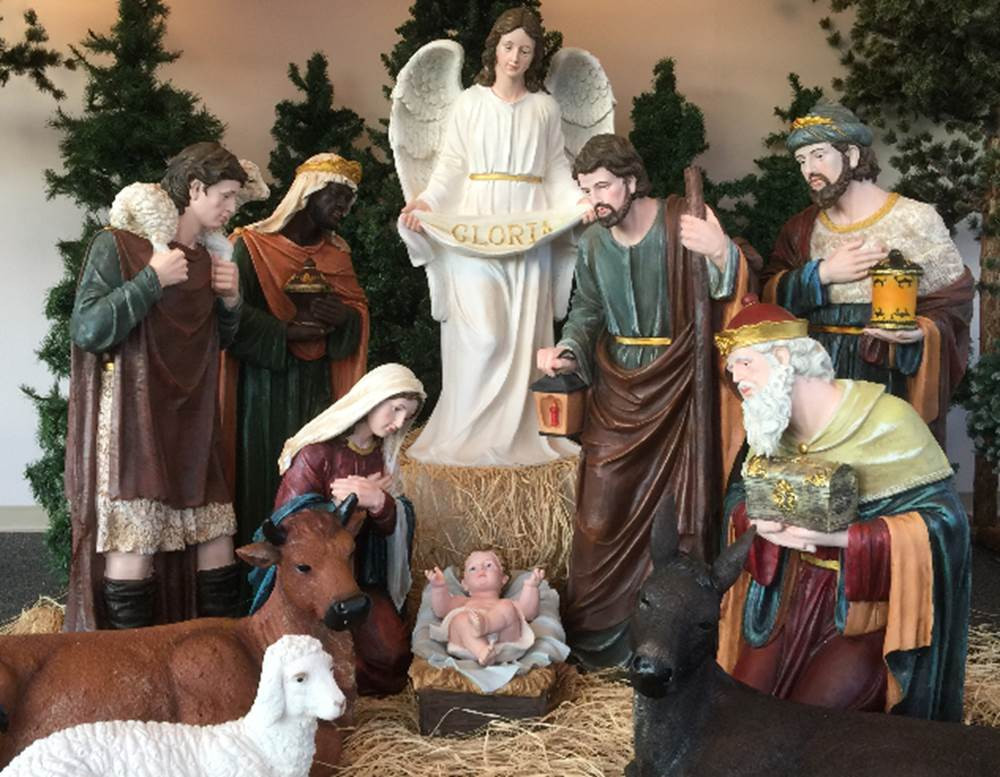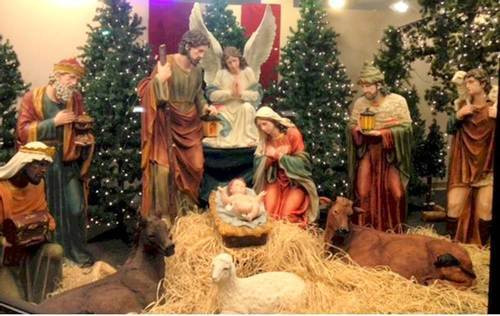
The Creation of The Nativity Scene
In 1223, Saint Francis of Assisi created the first live nativity scene in an attempt to put more emphasis on the worship of Christ and pull the focus of the holiday away from materialism and gift giving. Saint Francis used humans and animals to recreate the scene in which baby Jesus was born. After this, the nativity scene became extremely popular and a predominant symbol of Christmas.
Live nativity scenes were soon replaced with figures that we elaborately decorated and made from a variety of materials. The nativity scene soon made its way into Catholic countries, where they were set up in homes and churches.
The Purpose
The first nativity scene was created to remind us of the importance of Christmas, which is to celebrate Christ. Nowadays, the nativity scene symbolizes that same things and brings Christ back into the holiday. Displaying a large nativity set in your front yard or in your church can help you show that Christmas means so much more than the gifts.
Each figure in the nativity scene symbolizes something different. While not all of the figures are needed to recreate the nativity scene and continue providing the purpose, the meaning behind the figures can make this Christmas symbol even more special to those who understand.
The Animals
The animals are in important part of the nativity scene because they represent humble conditions in which the Lord and Savior was born. The animals that are generally included in nativity scenes are a donkey, an ox, and sheep. The ox is said to represent patience and the people of Israel, while the donkey represents humility and readiness to serve; the two together tell the story of Christianity.
The Virgin Mary
Mary is an extremely important piece of the nativity scene and is often larger than other characters. She generally wears a red gown to represent blood and a blue cloak, which symbolizes sky and heaven. She is meant to symbolize the link between heaven and earth.
The Three Wise Men
The three wise men symbolize a variety of different things. Often times, they are each of them is portrayed in different age groups, which represents the different stages of life. They also are meant to represent different countries, including Africa, Asia, and Europe. The gifts they bring also have symbolic significance. Gold represents Jesus’ kingship, frankincense represents His divinity, and myrrh is a symbol of His death.
The Shepherds
The shepherds which are often added to nativity scenes represent common man.

Displaying a large nativity scene in your church or front yard is a great way to show what Christmas means to you and help bring Christmas back to Christ. The large nativity scenes from St. Jude Shop include 12 figures to create the full set. From 27 inches to 59 inches, you can find the large nativity set that fits your needs and the space you have. Celebrate the season a set the symbolizes the importance of Christmas. Buy a full set or shop our individual figures to create a set of your own. Contact St. Jude Shop to learn more.

